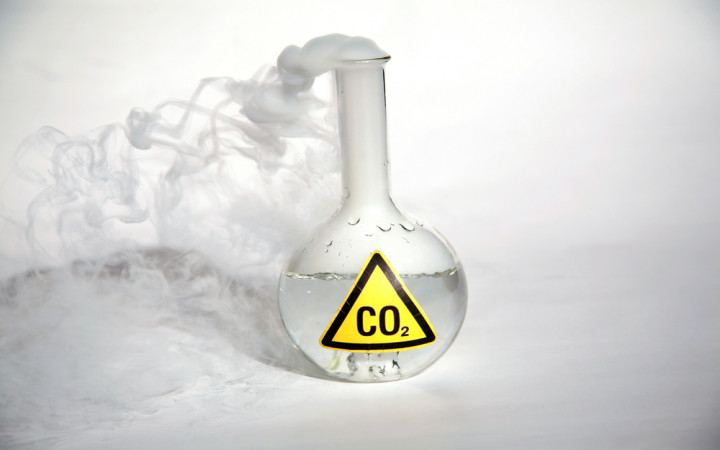Have you ever seen what looked like fog or smoke floating around the stage during a concert or theater performance? If so, then you already know a bit about dry ice. Dry ice is often used in special machines to create the illusion of smoke or fog.
But what exactly is dry ice? And is it really dry? You might be surprised to learn that it's not really “ice" at all…or at least not what we normally think of as ice. And it IS indeed dry.
Regular ice is frozen water. When it gets warm, it melts and turns from solid ice back into liquid water. If you leave an ice cube out on the counter and come back a while later, you'll find a wet puddle where the ice cube used to be.
Dry ice, on the other hand, is frozen carbon dioxide. Carbon dioxide is a gas. Each time you breathe, you breathe in oxygen and breathe out carbon dioxide.
Carbon dioxide gas turns to dry ice when the temperature drops to -110° F. That's right! 110 degrees BELOW zero!
When dry ice is warmed above -110° F, it changes from solid dry ice straight back to carbon dioxide gas. Since it never passes through the liquid phase, it's called dry ice. If you leave dry ice out in the sun for a few minutes, you won't return to find a puddle. It just evaporates right into the air!
The scientific process of changing directly from a solid to a gas is called sublimation. One pound of dry ice will produce about 250 liters of carbon dioxide gas through sublimation. That's enough gas to fill 125 2-liter bottles!
Dry ice has many uses. Because of its cold temperature and the fact that it will not make a mess when it “melts," dry ice is often used to preserve frozen foods when refrigerators are unavailable or impractical. It can also be used to flash freeze foods.
When dry ice is put in water, the sublimation process gets faster, creating dense clouds of smoke-like fog. Fog machines, theaters, haunted houses and nightclubs regularly use dry ice to create dense fog effects.
Because dry ice is extremely cold, you must use special care when handling it. Tongs or gloves should always be used, since direct skin contact with dry ice can easily cause frostbite.
It's also important never to use dry ice in a small, enclosed space. Carbon dioxide is denser than oxygen, so when dry ice begins the process of sublimation, the carbon dioxide gas it creates will push away oxygen. In a small, enclosed space, this could result in suffocation.




